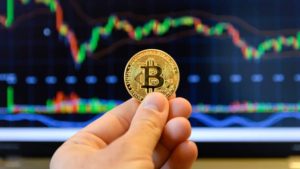In April and May, housing prices in the US were at all-time highs. In some areas, they are higher than they were at the early 2007 peak, right before the real estate industry began melting down before collapsing in 2008.
Could we be in for a repeat of that?
As I’m sure you remember, when the real estate bubble burst, it sent the US economy (and the rest of the world) into what became known as The Great Recession. In less than three years, it wiped out trillions of dollars’ worth of wealth – mostly from working- and middle -class homebuyers. Thanks to the government bailout, a good deal of that money was transferred to the financial upper classes, through the conduit of Wall Street, bankers, brokers, and insurance companies.
Media pundits and Wall Street CEOs called the crash “unprecedented” and “unpredictable.” That was balderdash, Americans learned later, when books and movies about the collapse started hitting the bestseller and top-rated film lists.
I was heavily invested in real estate prior to 2006. I started pulling back in 2007, and was out entirely before the crash. My investments had been in rental houses and apartments, not in REITs or other real-estate dependent stocks. So, I wasn’t listening to CNN or reading the NYT to find out what was going on with real estate. I was looking at the local markets, and making my buy/sell decisions accordingly.
My goal back then was to make an 8% return on my investment, cash on cash, and at least 12% with leverage (a mortgage). When prices got so high that I couldn’t make those numbers, I stopped buying. It was as simple as that.
When my friends, colleagues, and Jiu Jitsu buddies that were gobbling up properties like syrup-slathered pancakes asked me why I had stopped buying, I explained it another way. I told them that I was bothered by the discrepancy between the average income of first-time homebuyers and the average cost of a starter home.
I had always heard that a healthy ratio of household income-to-house price was about 1:5 (20%). In other words, a family with an income of $50,000 should be able to buy a house priced at up to $250,000. But in 2007, the average startup houses where I was looking in South Florida were selling for $400,000 to $500,000. And the average income for first-time homebuyers was just $60,000 to $70,000.
The numbers didn’t work. Still, banks were giving mortgages to anyone and everyone that had a pulse. And then packaging that “sub-prime” paper in bundles and selling them to huge financial institutions. You know, the ones that the government later bailed out, leaving millions of middle- and working-class Americans with debt they could not possibly repay.
Today, housing prices in South Florida – and up and down the coasts – are as high (or higher) as they were back then. Household income has risen, but not as much. In terms of household income and starter-home prices, the ratio is just as bad as it was in 2007. There is a difference, however, that is important. Banks are not handing out mortgages as freely as they did back then.
What this means to me: I am not expecting another real estate collapse like the one we had 14 years ago. I’m expecting to see prices come down to a sustainable level, and, in fact, it’s already started to happen. With interest rates going up, I’m expecting them to come down a good deal more in the coming six to 18 months.
As a direct investor in real estate, that doesn’t worry me terribly. That’s because I haven’t been buying property for several years. (And won’t again till prices move into buying territory.) However, I am keeping my eye on rental rates in the areas where I own property. If those rates go down significantly, so will my future ROIs.
I’m also wondering what to do with the cash I’ve been collecting from selling off some of my properties – particularly office buildings in cities (like Baltimore) that are seeing corporate flight due to high taxes and rising crime.
I’ve been looking around in states like Texas and Nevada that are benefitting from the emigration out of California. There are some pockets of hope there. I’ve toyed with the idea of investing in REITs, but given the way the economy looks generally, and rising interest rates, I’m not sanguine about any real estate-related stocks.
More on this in an upcoming issue.
Meanwhile, here’s an interesting chart that shows the average home prices in various cities around the US and the average yearly income it would take to buy one at the 1:5 ratio. Click here.
In the Aug. 2 issue, I said that while inflation is likely to continue rising overall, there will likely be pockets of deflation among industries that are both competitive and cater to the working and middle classes. (Like starter real estate. See above.)

 MarkFord
MarkFord



